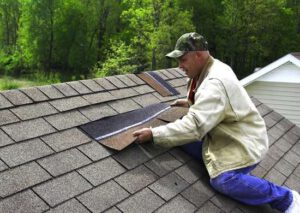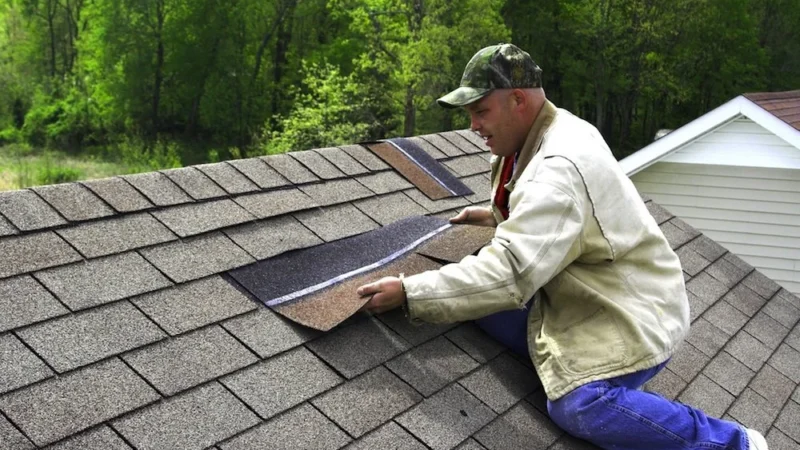Roofing Maintenance
Your roof is the ultimate line of defense between your home and the outside elements. During roofing maintenance, our experienced roofers examine the entire roof for signs of damage and red flags that could turn into bigger problems down the road.

They check the flashing around chimneys and vent pipes, re-caulk seams, and examine rubber boots and seals to ensure they are in good condition. They also trim low-hanging branches to prevent them from scraping or damaging the roof during storms. Click https://www.roofersincolumbusga.com/ for more details.
Roof flashing is a vital part of the roof system. It is the metal that seals off the junction between the roof and walls and eliminates a seam that could leak or rot over time. Flashings can also be used to seal joints in a roof valley or around chimneys, vents and other roof penetrations. If the flashing is damaged or missing, water will enter the home and cause mold and structural damage. It is important to check the flashings regularly for any signs of damage or wear. A professional roofing contractor will be able to inspect the flashing and make any necessary repairs.
Flashing can become loose over time, either because the screws that anchor it in place loosen or the metal loses its strength and flexes. This can allow moisture to get into the home, causing mold and wood rot. If this occurs, the flashing should be repaired as soon as possible to prevent further damage and leaks.
Another common problem with flashing is corrosion, which can cause the material to break down. This may be due to a lack of corrosion-resistant materials used, poor installation techniques or simply age. During inspections, inspectors will note whether the flashing is corroded and take appropriate action. They will usually comment on the severity of the corrosion, which can range from mild to severe, and recommend replacement if necessary.
Ideally, the flashing should be replaced as soon as it is discovered to be corroded, or if there are any obvious signs of moisture intrusion into the home. A roofer can usually replace the flashing with a new, long-lasting material such as stainless steel or galvanized aluminum. The new flashing should be installed properly and sealed with a high-quality roofing cement, so that it is waterproof.
Depending on the type of roof, other things that the inspector will look for include blisters and cracks on the membrane. They will also examine the caulking around penetrations and roof vents to ensure that it is still intact. They will also look for any areas where the caulking has deteriorated, which may be a sign of moisture intrusion into the building shell.
Trim Tree Branches
If your trees are overgrown and close to your roof, they can rub against the shingles or cause damage during storms. Regular inspections and trimming of the branches can help prevent this damage. Trimming also helps keep animals, pests, and debris away from the roof. You can do this yourself or have a professional company do it for you.
Start by removing any dead or dying branches that you find. Then, cut branches that are rubbing or crossing over each other to create an open crown. Thinner crowns are less prone to wind damage and can reduce the amount of debris that lands on your roof. If you are thinning the tree, leave space along the major limbs so that the new branches can develop.
Avoid topping the tree (removing more than 25% of the canopy in one year). Too much pruning stresses the tree and can lead to insect infestations, fungus, and wood decay. Make sure to keep the branch collar intact — this is a swelled area, sometimes wrinkled, where the branch connects to the trunk or a thicker branch. The branch collar is a natural wound covering that helps the tree seal and heal. If you remove the collar, you expose the branch to water and insects that could cause rot or even break off the branch.
When cutting a large, thick branch, first saw an undercut about half way through the branch. Then, saw a downward cut about an inch beyond where you made the undercut. This creates an overcut that takes the weight of the branch and helps prevent tearing. Don’t make a flush cut. This cuts straight down and can create a larger open wound that compromises the natural defense system of the tree.
You should remove suckers as they form, since they will never become desirable branches and only steal energy from the branch they are growing into. You should also get rid of weedy growth and water sprouts, which are weak, strappy branches that form around the base of the tree. Finally, prune off any branches that are growing inward toward the center of the crown, as this can lead to crotch weakness and cause a split during heavy winds or ice loads.
Clean Up Debris
As you work on the roof, it’s important to have a plan for debris cleanup. You’ll want to put a tarp on the ground, and it’s helpful to have a wheelbarrow or dumpster onsite as well. This will make the job much faster and easier, as you can simply throw debris away without letting it pile up. It will also keep tar stains out of the gutters, windowsills and other parts of the house.
Organic debris on a roof is fairly common, especially in areas with more trees and shrubbery. Leaves, pine needles, cones, seedpods and fruit are just a few of the things that can be found on a rooftop. Typically, these items fall from nearby trees or are blown onto the roof during storms. It’s essential to clear this debris from the roof on a regular basis, as it can cause damage over time.
Debris can obstruct the ability of water to drain properly from the roof and can even clog. It can also block vents or other air flow, which can cause the shingles to dry out and become damaged.
Cleaning the roof of debris is not a difficult task, but it’s best to have it done by a professional, so that you can be sure they are following proper safety protocols. It’s also a good idea to choose a day that is dry, since wet debris will be much harder to remove from the roof.
Another benefit of having a professional handle the debris removal is that they can also check the condition of the gutters. This is vital to keeping the water flowing correctly off of the roof and into the gutters, where it should go. In addition, they can search the yard for stray nails that have fallen from the roof. This is a great way to prevent children and pets from injuring themselves on these sharp objects. A metal detector can be helpful in finding these stray nails, which can then be collected and disposed of safely.
Inspect the Roof
Ideally, homeowners should visually inspect their roof twice per year, preferably in the spring and fall. This allows them to catch small issues that can easily be corrected, such as a missing shingle or worn down caulking, before they become serious problems. If a homeowner isn’t comfortable climbing on their roof, a professional can perform the inspection. This is especially important for homes with a steep slope or complicated roofing. A professional will use a ladder, or even a drone, to assess the condition of the roof.
A good inspector will start by walking the surface of the roof, if it’s safe to do so. The inspector will look for things like shingles that are curling, loose or missing; moss; rust; and areas where debris has collected. The inspector will also look at the flashing around chimneys, vent pipes and other openings on the roof, checking for signs of deterioration.
The inspector will also check the gutters and downspouts to make sure they’re clean and free of water. This will help to prevent water from backing up onto the roof and causing leaks. Finally, the inspector will inspect the interior of the home, looking for water stains and other signs that a leak has been occurring.
After the inspection, a professional should provide a written report listing the results of the inspection. This should include details of any damage or concerns found and a recommendation for repairs. They should also provide a list of local licensed roofers who can complete the work.
Although many minor problems can be identified with a visual inspection, it’s always best to have a professional run a detailed assessment. They’ll be able to spot issues that aren’t so obvious, and may suggest ways to prevent the problem from recurring in the future. They’ll also be able to give accurate quotes for any repairs that need to be made. Ultimately, a well-maintained roof is a long-term investment that can protect the interior of your home and increase its value. By following these simple tips, you can keep your roof in tip-top shape.





